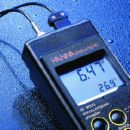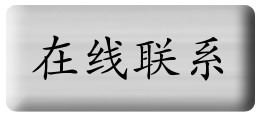|
|
||||||||
检测服务
|
▪ 中文版 ▪
≪检测服务≫
►玩具测试
►化学测试
►环保测试
≪技术资讯≫
» 玩具测试
» 婴幼儿产品测试
» 化学测试
» 环保测试
» 电子电器产品测试
» 轻工产品测试
» 纺织品测试
≪新兴市场国家≫
≪常用法规≫
▪ GCC证书
(General Conformity Certification)
(Phthalates EC 1907/2006, Annex XVII, Items 51 & 52)
▪ GB 24613
▪ EMC电磁兼容标准 2004/108/EC (89/336/EEC)
▪ EN 62115 欧洲电动玩具安全标准 (2009/48/EC)
▪ GB 6675
▪ CCC认证
▪ GB 国家標準
▪ 南非标准
▪ 偶氮染料
Azo Dyes ( EC 1907/2006, Annex XVII, Item 43)
▪ BS 7272-1:2008 / BS 7272-2:2008
▪ 镉含量 Cadmium (EC 1907/2006, Annex XVII, Item 23)
(EC 1907/2006, Annex XVII, Item 46)
▪ 甲醛 Formaldehyde (EN 717; EN 120;
(EC 1907/2006, Annex XVII, Item 27)
(EC 1907/2006, Annex XVII, Item 22)
|
|
香港公司 电话: (852) 3590 6238 传真: (852) 2120 8776 电子邮件: enquiry.hk@professional-laboratory.com
|
Desiccated Milk-based Products
Packaging of Khoa
Aseptic packaging of khoa in radiation sterilized laminated
pouches extended its shelf life to 7-22 days as against 1-3 days for unpacked
samples when stored at 37°C. The use of radiation-sterilized packages did not
impart any additional shelf stability to khoa. Similar results were also
observed with the use of unsterilized pouches, indicating insignificant
microbial contamination of the product from the packaging material. The shelf
life of the product remains unaffected in vacuum packaging.
Recommended packaging: Films capable of forming a good barrier against moisture loss and oxygen permeation are recommended for khoa packaging.
Packaging
The four most
important aspects of packaging are: Presentation (graphics and material), cost,
consumer friendliness (easy-to-open and use), and effect on environment. The
growing sophistication in marketing trends calls for consumer convenience in
product buying and use.
Paper Carton Boards
Cost-wise,
cartons are cheapest amongst all the packaging materials. They are printable for
labelling purpose and are environment-friendly. However, these are not
pilfer-proof and can be easily unsealed. Further, cartons also have a poor
moisture barrier property. To overcome these deficiencies, cartons with plastic
inner and outer liners or PE-lined papers have been developed and are widely
used.
Modified Atmosphere Packaging (MAP)
Modified Atmosphere Packaging (MAP), also called Controlled
Atmosphere Packaging (CAP), is a process in which the normal atmosphere air
inside the sealed package is replaced by a known gas or a mixture of gases.
The principal factors for a successful MAP operation are the choice of
gas/gases and its effect on the product, and the use of a suitable packaging
material and machine. MAP should be applied after ascertaining physico-chemical
characteristics of the product and problems likely to occur during its storage
period.
Indian Standards for Packaging of Milk and Milk
Products
Metallic Packaging
- IS 8221:1976 Code of practice for corrosion prevention
of metals and metal components in packages, Reaffirmed 1990
Tin Packaging
- IS 4079:1967 Canned Rasogolla
- IS 9991:1981 Condensed milk cans, Reaffirmed 1992
- IS 10339:1988 Ghee, Vanaspati and edible oil tins (1st
revision)
(Amendment 1) Reaffirmed 1994
Aluminium Foil Packaging
- IS 891:1978 Paper aluminium foil laminates for general packaging. Reaffirmed 1989
- IS 8970:1991 Aluminium foil laminates for packaging
(1st revision)
Aluminium Bottles
- IS 3603:1988 Seamless aluminium bottles (1st
revision)
Plastic Film Packaging
- IS 7019:1998 Glossary of terms in plastics and flexible packaging, excluding paper (2nd rev)
- IS 10171:1987 Guide on suitability of plastics for food
packaging
Polyethylene/Flexible Packaging
- IS 11824:1986 Paper coated high density polyethylene woven sacks for packing skim milk powder
- IS 14129:1994 Flexible packaging materials for packing of Vanaspati in 10 kg & 15 kg packs
- IS 10840:1994 Blow moulded HDPE containers for packing of Vanaspati-specifications
- IS 11352:1994 Flexible packaging materials for packing
of Vanaspati in 100 gm, 200 gm, 500 gm, 1 kg, 2 kg, & 5 kg
packs
Paper/Fibreboard Packaging
- IS 3263:1981 Waxed paper for confectionery (1st revision). Reaffirmed 1998
- IS 3962:1976 Waxed paper for general packaging (Amendment 1) Reaffirmed 1996
- IS 4261:1967 Glossary of terms relating to paper & pulp based packaging materials (Amendments 2)
- IS 7162:1973 Waxed cartons for packing Ice cream, Reaffirmed 1993
- IS 7186:1973 Glossary of terms relating to paper & flexible packaging
- IS 9313:1979 Corrugated fibreboard boxes for export packaging of glass jars & bottles filled with processed foods
- IS 9988:1981 Waxed paper for bread & biscuit, Reaffirmed 1993
- IS 10177:1982 Ice cream cups & lids, Reaffirmed 1993
- IS 12212:1987 Corrugated fibreboard boxes for transport
packaging of butter packed in primary carton
Glass Bottles
- IS 1392:1983 Glass milk bottles (3rd revision). Reaffirmed 1988
- IS 6654:1992 Glass containers: Glossary of terms (2nd
revision). Reaffirmed 1998
Milk Bottle Crates
- IS 1613:1960 Milk bottle crates (Amendment
1)
General Packaging Code
- IS 10106(Part-I/Sec 2):1990 Packaging code: Part I
Product packaging, Sec 1 Foodstuffs & perishables
Some guidelines for use of plastic materials have also been published:
- IS 2798:1998 Methods of test for plastic containers (1st revision)
- IS 8747:1997 Methods of test for environmental stress-crack resistance of blow-moulded polyethylene containers
- IS 9883:1981 List of pigments and colorants for use in plastics in contact with foodstuffs, pharmaceuticals and drinking water
- IS 10171:1987 Guide on suitability of plastics for food packaging
Process and Product
Development Techniques
Packaging Techniques
The main function of packaging is to protect the product from
physical damage and environmental changes during transit. While choosing the
packaging material, check its suitability for the desired shelf life of the
product. The packaging material should also prevent deterioration of the product
quality as a result of exposure to sunlight. Make the package and its graphics
attractive for the consumer and provide nutritional information, code date for
its use and recipes to enlarge the use of the product. The consumer should find
the package easy to handle and convenient to store.
» 全球网络
英国 ▪ 美国 ▪ 加拿大 ▪ 澳大利亚 ▪ 纽西兰 ▪ 西班牙 ▪ 波兰 ▪ 此利时 ▪ 香港 ▪ 中国 ▪ 台湾 ▪ 韩国 ▪ 新加坡 ▪ 印度 ▪ 马来西亚 ▪ 菲律宾 ▪ 泰国 ▪ 印度尼西亚 ▪ 越南 ▪ 柬埔寨 ▪ 南非 ▪ 尼日利亚
![]()
![]()
![]()
![]()
![]()
![]()
![]()
![]()
![]()
![]()
![]()
![]()
![]()
![]()
![]()
![]()
![]()
![]()
![]()
![]()
![]()
![]()
© 2005, 2010 版权所有 专业检测及顾问有限公司







